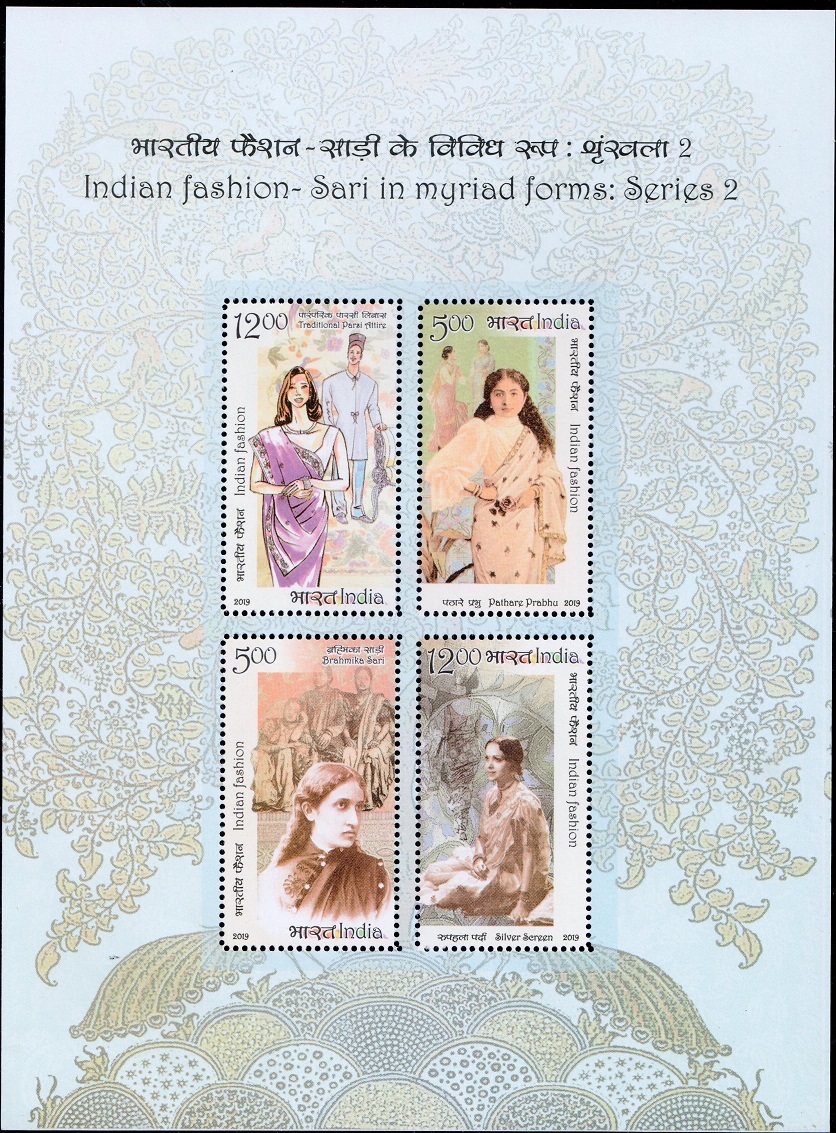
Indian Fashion – Sari in Myriad Forms : Series-II
Complete set of 4 nos. of commemorative postage stamps on the Fashions of India : Traditional Parsi Attire, Pathare Prabhu, Brahmika Sari and Silver Screen :
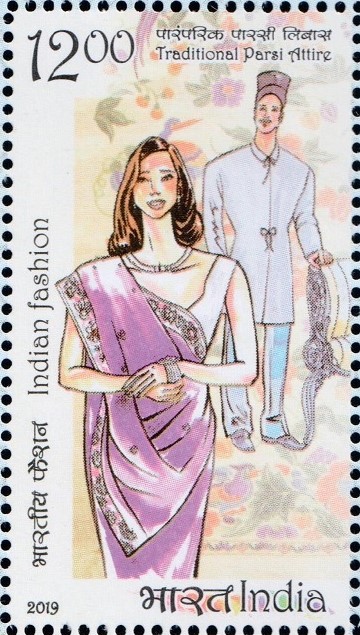
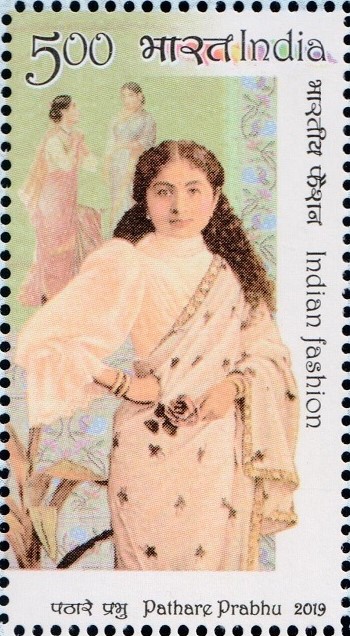
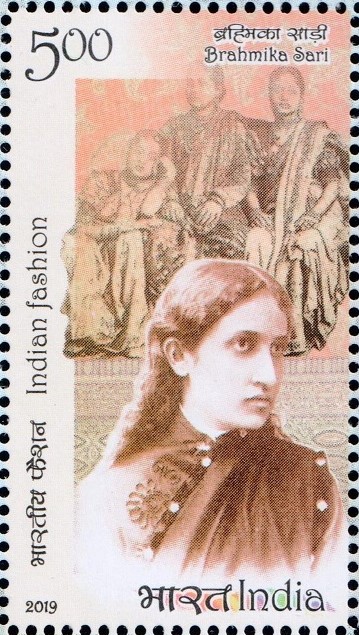
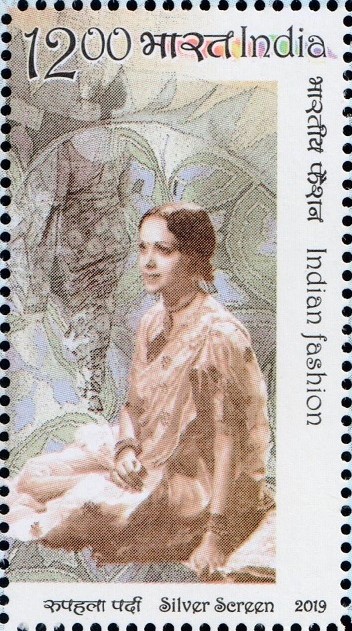
 Issued by India
Issued by India
Issued on Jun 12, 2019
Issued for : Department of Posts is pleased to bring out a set of four Commemorative Postage Stamps with focus on the Sari as part of the second series on the theme, Indian Fashion.
Credits :
Stamps/Miniature Sheet/First Day Cover/Brochure : Shri Suresh Kumar
Cancellation Cachet : Smt. Alka Sharma
Type : Miniature Sheet, Mint Condition
Colour : Multi Colour
Denomination : 1200 Paise (2) and 500 Paise (2)
Stamps Printed : 5.0 Lakh each
Miniature Sheets Printed : 1.1 Lakh
Printing Process : Wet Offset
Printer : India Security Press, Nasik
About :
- Fashion is a universal subject, a language understood and spoken by one and all. Fashion is one of the most popular modes of expression. It describes the ever-changing style of clothes worn by those with cultural status. Fashions vary greatly within a society over time and are affected by age, occupation, location and social class.
- As part of the Traditional Parsi Attire, Parsi women wear the Gujarati sari, but with a few style changes. Parsi women have always brought the palla down over the right shoulder not the left. The traditional Parsi sari made of embroidered fabric is called a Gara. Parsi Gara embroidery was a turning point in introducing pagodas and chinamen motifs in embroidery rather than peacocks and paisleys. The Gara is worn after the Sari Perawani or sari wearing ceremony. Parsi brides wear a white ornate gara sari which is generally a family heirloom, passed on from one generation to another. These days, however, off white and pastel shades are also chosen by brides instead of the traditional white. Parsi men wear their long caftan, tied at the waist with a turban around the head.
- The Pathare Prabhus immigrated from Patan, Gujarat to Mumbai in the 13th century and were among the first few inhabitants of Bombay. They were an ingenious community and were employed in various important positions of the British administration in India with a claim of 100% literacy rate in their community. This special status acquired under the colonial rulers allowed the Pathare Prabhus to be included in British Indian society gatherings. Their dressing was also inspired by the English fashion trends of their time. The Pathare Prabhu women tailored their blouses with the English puffed sleeves and wore them under their Kasbis; a nine-yard sari of satin like material with an intricate border done in pure gold and silver. This was just one of their many innovative ways to keep up with haute couture while still retaining their ethnic aesthetics. Through their distinctive sense of dressing, the Pathare Prabhu women were path-breakers in striking a balance between the old and new world charm; a phenomenon that is woven into the warp and weft of the world of fashion today.
- The style of wearing the sari with a blouse often modelled on the Western dress was soon adapted by those from families involved in the social reform movement in Bengal as well as by emancipated families in other parts of the country. Jnanadanandini Devi, belonging to the Tagore household, was deeply influenced by these newly-introduced styles of saris. While living in Bombay, Jnanadanandini Devi socialized in European circles. This required her to dress differently for which the traditional Bengali style of wearing the sari appeared unwieldy. During a tour of Gujarat with her husband, Jnanadanandini improvised upon the sari worn by Parsi women. She created her own style of draping the ‘pallu’ over the left shoulder – as opposed to the Parsi style – so that the right hand remained free for courtesies. She even offered to train other women to wear the sari in her novel style. Blouses were elaborate, modelled on current styles prevalent in the West: thus high collars with ribbons, frills, jabots and brooches were popular from the 1870s till the turn of the century. While those from the Brahmo Samaj referred to the new style of wearing the sari as the “Thakurbarir sari” (sari worn in the style of the Tagores, a leading Brahmo family), as more and more Brahmos started wearing the sari in this manner, it came to be popularly known as “The Brahmika Sari” throughout India.
- Indian fashion often takes its cues from cinema. In fact, the Silver Screen, more often than not, is the trendsetter in Indian fashion. Devika Rani was the first lady of Indian Cinema who took the position of Indian Cinema to global standards. Her attire, both in films and sometimes in real life, was considered “risqué” at that time. The 1940s was a decade of emerging fashions at the movies and none other than Devika Rani epitomised the essence of 40’s style – neat hairdos, pearl jewellery, frills and fancy saris. Ever since the advent of Hindi cinema in the 1930s, Bollywood and sari have gone hand in hand. From old school glamour to modern cinema, the Bollywood actresses have always reinvented the sari and lent glamour to this Indian wear. History and Indian Cinema bear testimony to the fact that the classic vintage sari is evergreen.
- Presenting Indian Fashion – Sari in Myriad Forms: Series 2……
- Text : Based on material collected from internet sources.


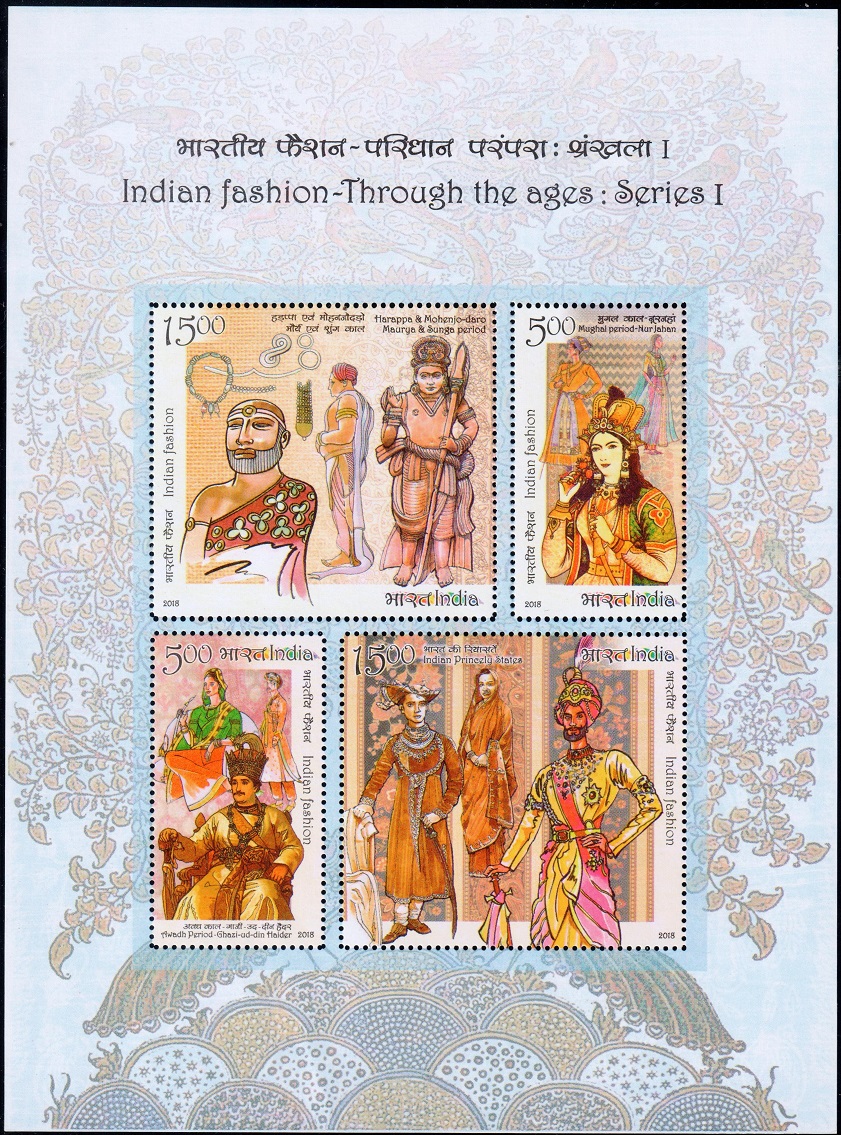
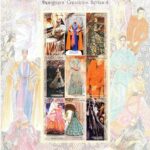
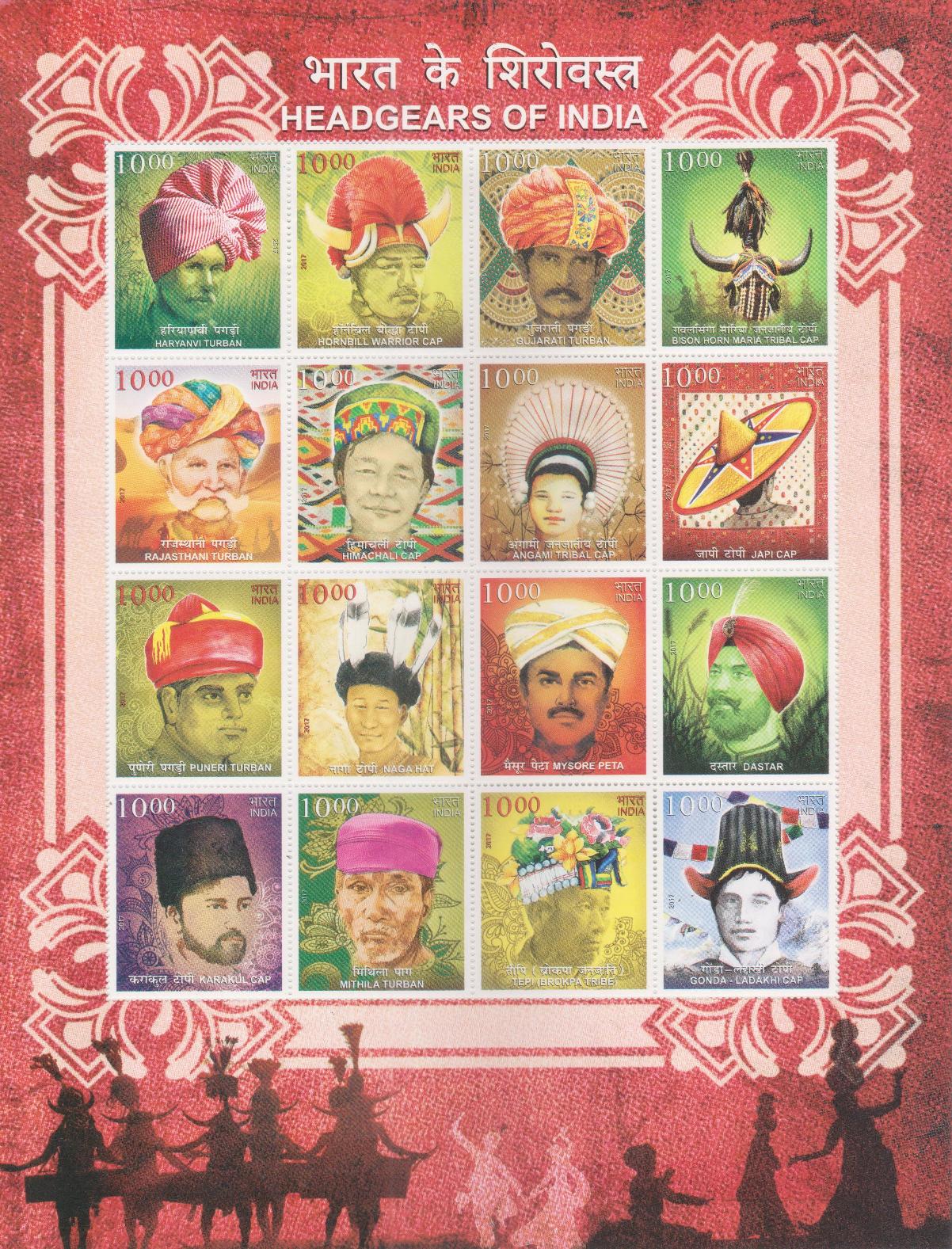
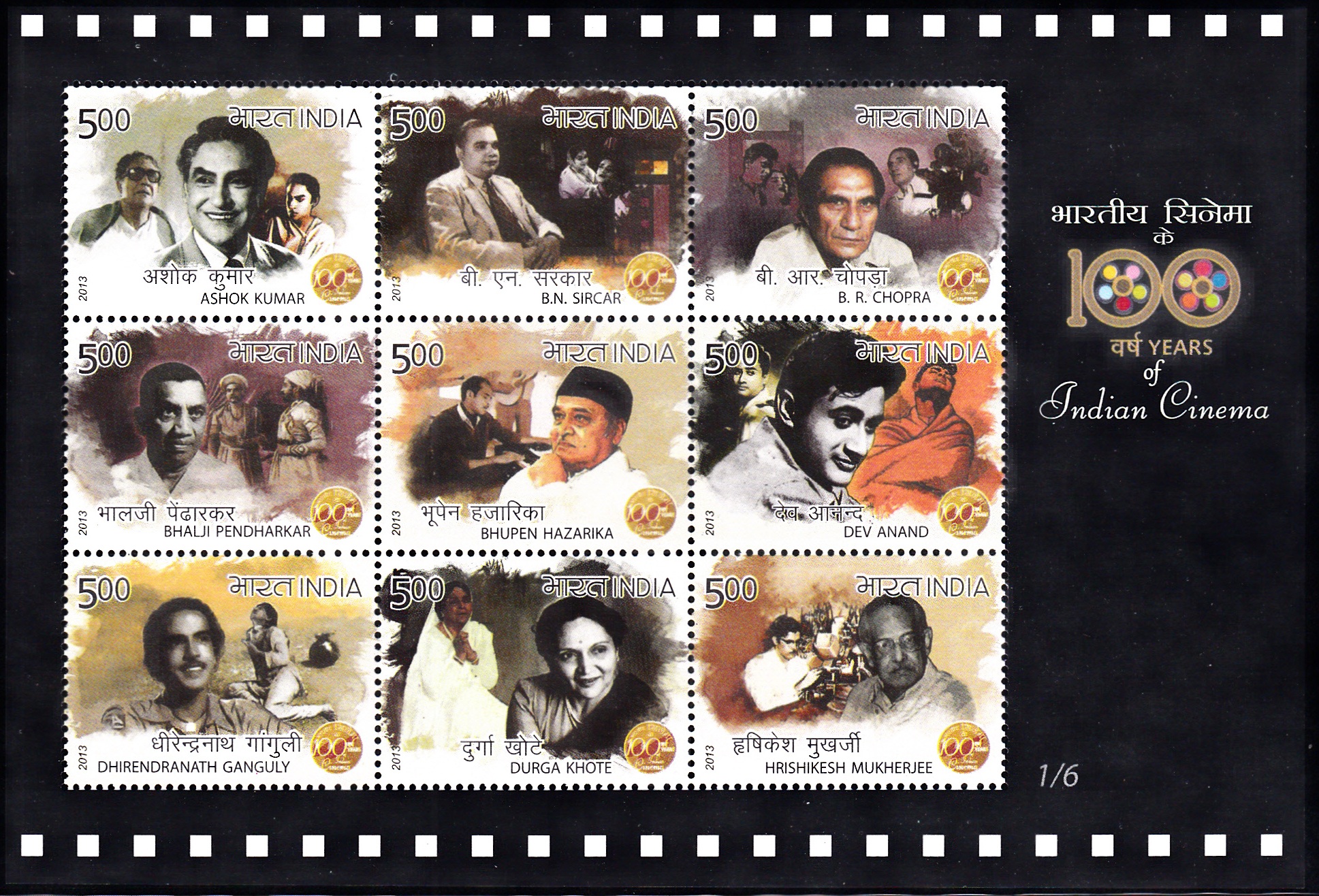
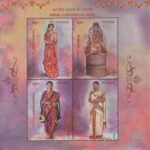
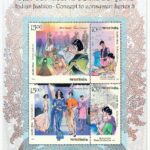
Goodness